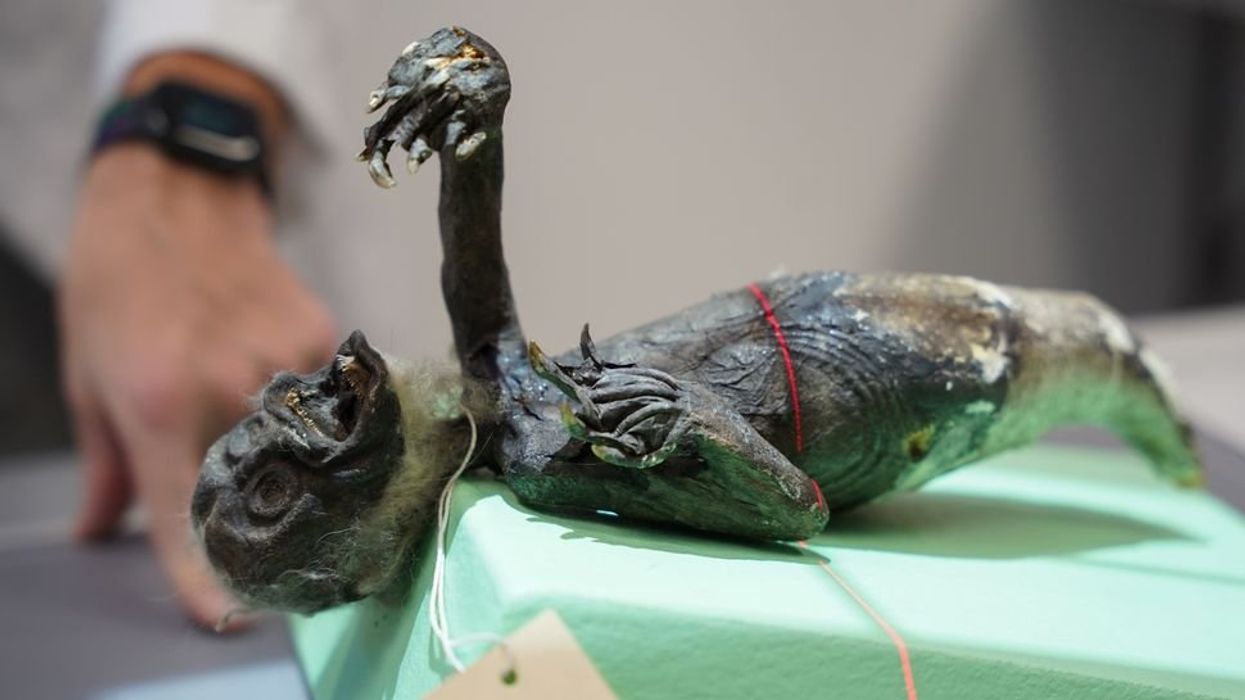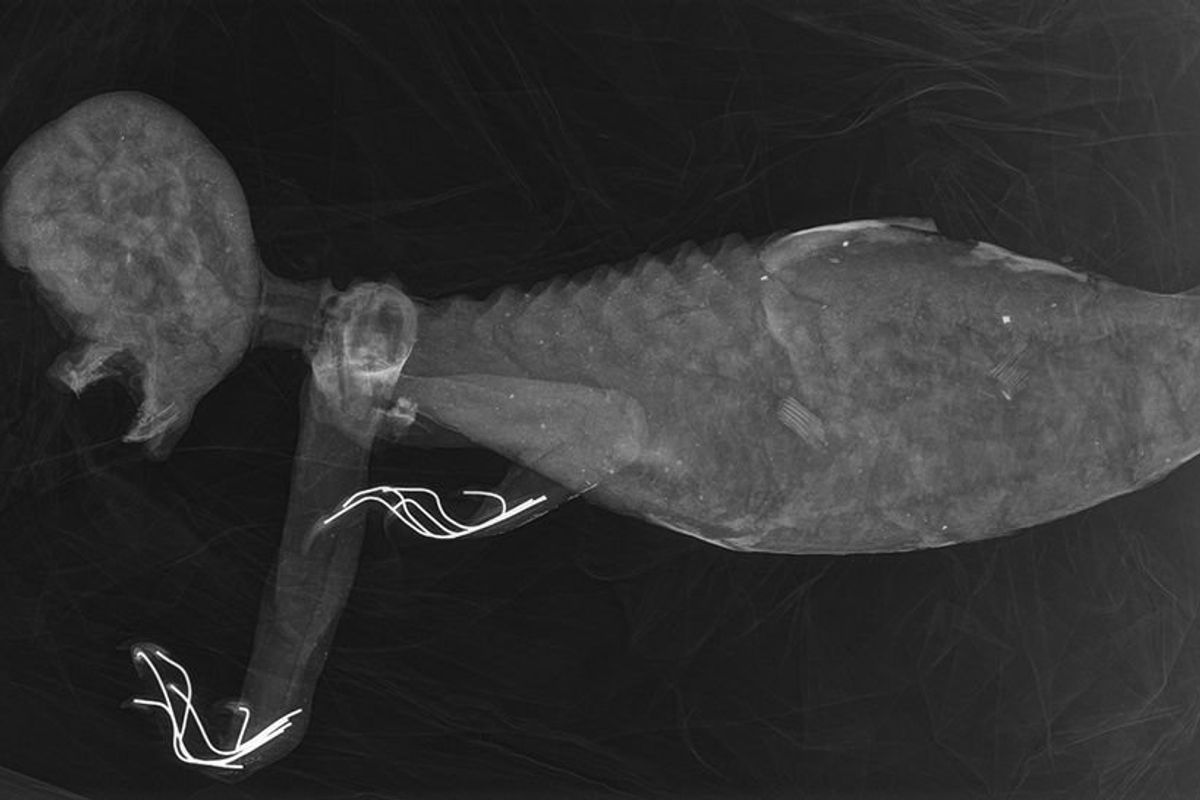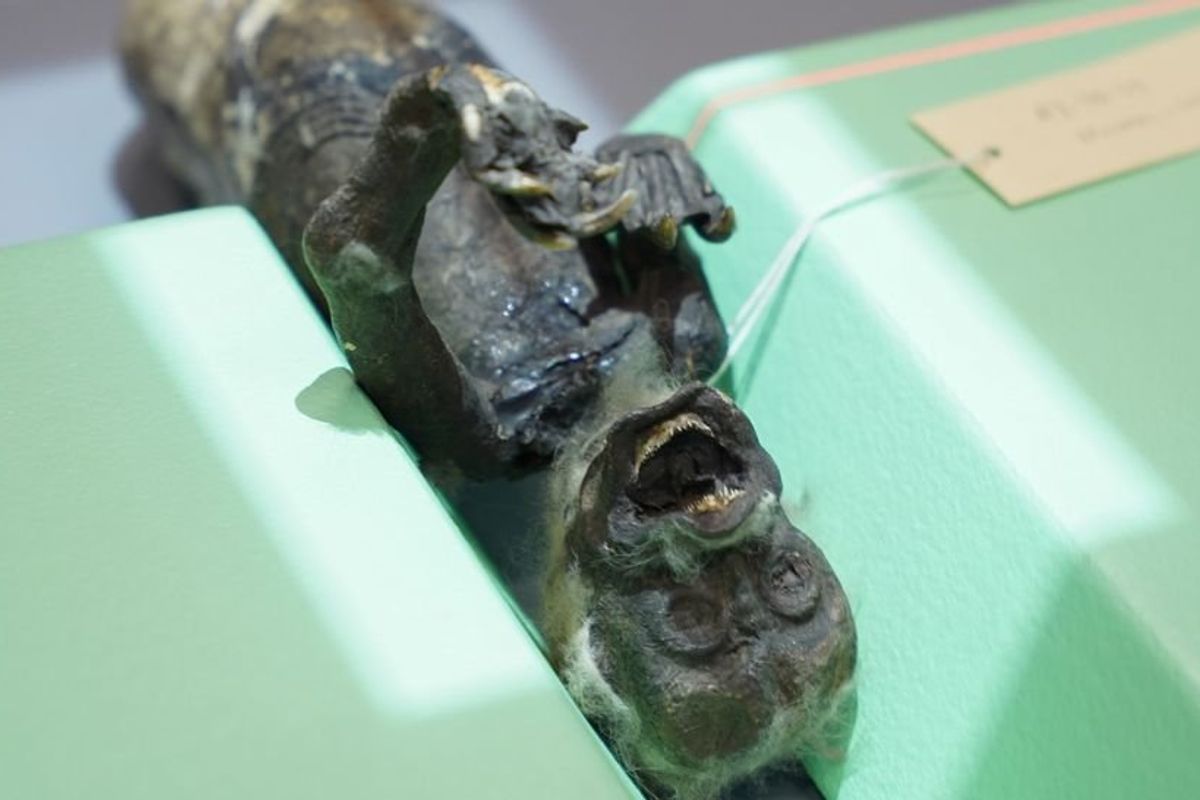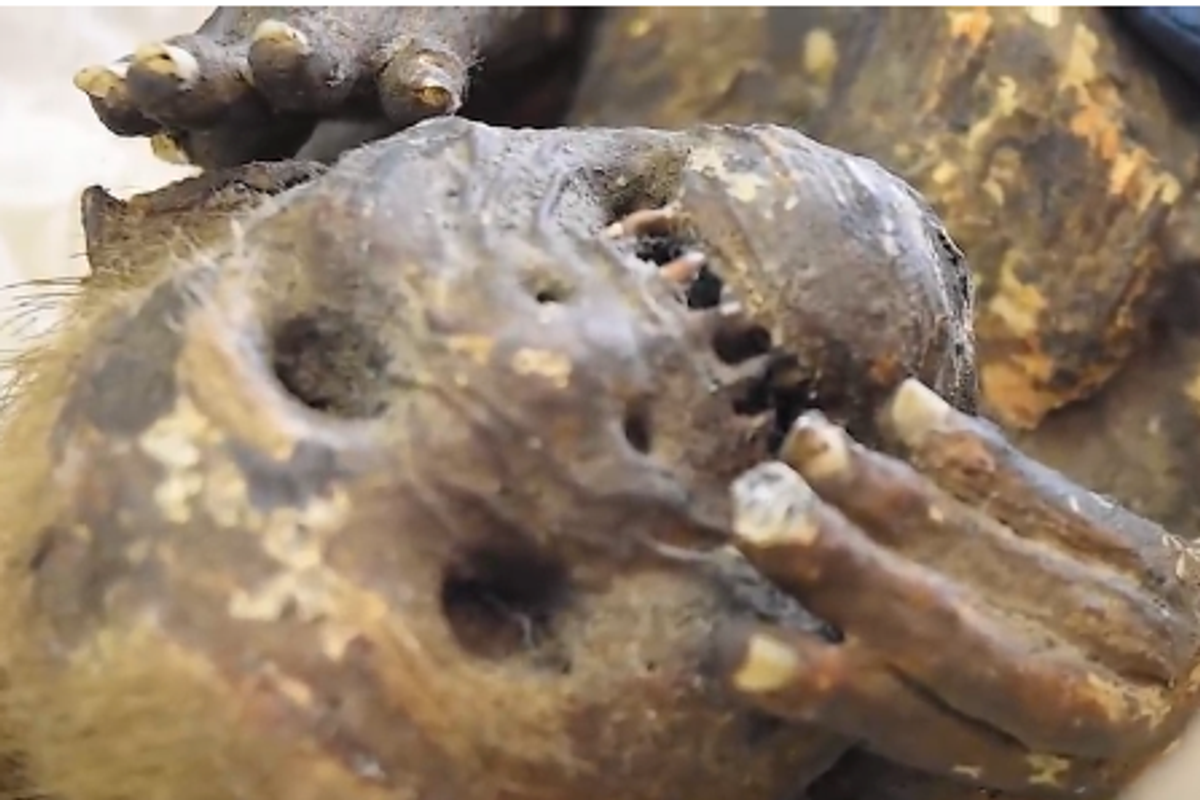Harriet Brewis
Nov 01, 2023

The nightmarish creature has been a mystery for 170 years
(Fiji Mermaid Project/Joseph Cress via Live Science)
Frankenstein’s monsters aren’t just for Halloween, as a team of US scientists have recently discovered.
The experts at Northern Kentucky University (NKU) were tasked with analysing the remains of a supposed mummified “mermaid”, and what they found was pretty gruesome.
The mummy was brought to America from Japan more than 100 years ago after being donated it to the Clark County Historical Society in Springfield, Ohio.
It arrived at the society in 1906 but documents supplied alongside the strange specimen suggest it dates back to the mid-1800s. This means that for some 170 years, the true identity of the wisened, 29-cm-long creature remained a mystery.
However, thanks to modern technology, the team at NKU has finally worked out that the sinister-looking “siren” is, in fact, a ghoulish hybrid of monkey, fish and lizard.
Joseph Cress, who led the project, told Live Science that he and his colleagues used X-ray and CT scans to investigate the creepy cadaver.
"This allowed us to see [the mummy] in almost every dimension in the hopes to see what was inside it," he explained.

They determined that that the “mermaid” consists of the head and torso of a monkey sewed onto the body of a fish, and its “hands” are the clawed legs of a lizard – most likely a Komodo dragon.
The scans also revealed a pair of wooden stakes hidden inside the chimeric corpse – one running from head to tail and another across the shoulder blades — which were presumably inserted to keep the monster in one piece.
Cress and his colleagues are currently trying to reconstruct a more detailed model of the mermaid and its individual components, according to Live Science.
Once these models are complete, they plan to send them to zoos and aquariums to help confirm the different parts on a species level.

However, jaw-dropping this specimen may be, it's not the only “mermaid” to be debunked in recent times.
In March 2022, researchers analysed a similar example that was found in a hidden box in a Japanese temple.
They also expected the creature, which was 30.5 cm long and dated back to the mid-1700s, to be a monkey-fish hybrid.
However, tests conducted in February this year revealed that it was, in fact, predominantly made of cloth, paper and cotton.
It had been painted with sand and charcoal and held together by metal pins, while various animal parts, including fish skin and mammal hair, had been stuck to it.

Experts believe that the two “mermaids” were made to resemble "ningyo" — hideous fish-like creatures with human heads and sharp claws from Japanese mythology.
According to legend, a nun named Yaobikuni lived for 800 years and retained the youthful appearance of a young woman, after eating a ningyo.
Her immortality made the creatures a symbol of longevity, so it’s likely that fraudsters tried to recreate the mermaids to sell them to wealthy seekers of immortality.
Still, at least the owners of these two examples didn’t make the mistake of trying to eat them.
Sign up for our free Indy100 weekly newsletter
Have your say in our news democracy. Click the upvote icon at the top of the page to help raise this article through the indy100 rankings
Top 100
The Conversation (0)












